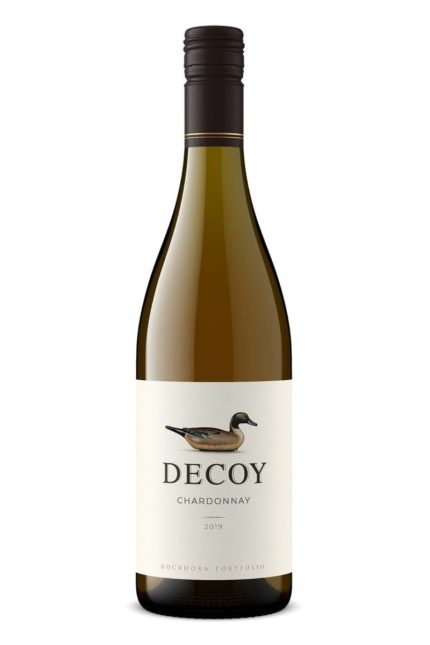Chardonnay is often described as the most versatile and widely recognized white wine in the world. Whether you are sipping on a chilled glass of crisp, unoaked Chardonnay or enjoying the richness of a full-bodied, oaked version, this grape variety has the ability to adapt to a variety of climates, winemaking techniques, and food pairings. Its popularity transcends borders, with notable production across Europe, the Americas, Australia, and beyond. In this article, we explore the origins, characteristics, key regions, and food pairings for Chardonnay wine, offering an in-depth look at why this wine continues to captivate palates around the globe.
The History of Chardonnay
The history of chardonnay wine begins in the Burgundy region of France, where it is believed the grape first emerged as a natural cross between the Pinot Noir and Gouais Blanc grape varieties. While Chardonnay has been cultivated in Burgundy for centuries, it wasn’t until the late 20th century that the grape’s international appeal began to grow. The name “Chardonnay” is thought to derive from the village of Chardonnay in the Mâconnais subregion of Burgundy, although some believe it refers to the word “chardon,” meaning “thistle” in French, as the grapevine can have thorny tendrils.
Chardonnay’s rise to fame on the global stage can be traced back to the mid-20th century when it was introduced to regions outside France. The grape flourished in warmer climates such as California, Australia, and South Africa, thanks to its ability to adapt to diverse growing conditions. Today, Chardonnay is grown in nearly every major wine-producing region, and it is the most widely planted white grape in the world.
Key Characteristics of Chardonnay
One of the key reasons Chardonnay is so beloved by wine drinkers is its ability to produce a wide range of wine styles. The flavor profile of Chardonnay depends on the climate where the grapes are grown, the winemaking techniques employed, and whether the wine is aged in oak barrels or stainless steel. Below are some of the main characteristics you can expect from a bottle of Chardonnay.
Flavor Profile
- Fruity Flavors: Chardonnay often exhibits a broad array of fruit flavors, depending on the climate in which it is grown. In cooler regions, expect citrus notes such as lemon, lime, and grapefruit, along with green apple and pear. In warmer climates, Chardonnay takes on riper fruit flavors like peach, apricot, pineapple, and melon.
- Oak Influence: Many Chardonnay wines are aged in oak barrels, imparting flavors like vanilla, butter, toasted bread, and even caramel. This adds depth and complexity to the wine. Oaked Chardonnays often have a richer, fuller body with a creamy mouthfeel, especially if they undergo malolactic fermentation, a secondary fermentation process that gives the wine its characteristic buttery texture.
- Acidity: Chardonnay generally has a balanced acidity, which can range from vibrant and zesty in cooler climates (like Chablis) to softer and rounder in warmer regions (such as Napa Valley). This acidity makes Chardonnay incredibly food-friendly, as it helps to cleanse the palate, especially when paired with rich or fatty dishes.
- Minerality: In regions with limestone-rich soils, Chardonnay can show distinctive mineral notes, often described as “flinty” or “steely.” These characteristics are most commonly found in wines from Burgundy’s Chablis region, where the cool climate and high-quality terroir allow the grape to express its mineral qualities fully.
Body and Texture
Chardonnay is known for its versatility in terms of body. It can range from light and crisp to full-bodied and rich. The body of the wine is determined by factors such as the ripeness of the fruit, the use of oak, and whether malolactic fermentation has taken place.
- Light and Crisp: Chardonnay made in cooler climates (such as Chablis or parts of New Zealand) tends to be lighter, more refreshing, and often unoaked. These wines focus on pure fruit flavors and higher acidity.
- Rich and Buttery: In warmer regions like Napa Valley and parts of Australia, Chardonnay tends to be fuller-bodied, often exhibiting a creamy texture and rich fruit flavors. The use of oak aging, along with malolactic fermentation, gives the wine a round, smooth mouthfeel and a more pronounced buttery character.
Key Chardonnay Regions Around the World
Chardonnay’s ability to thrive in various climates has allowed it to become one of the most widely grown white wine grapes across the world. Each region imparts unique characteristics to the wine, depending on the local climate, soil composition, and winemaking practices.
Burgundy (France)
Burgundy is the birthplace of Chardonnay and remains one of the most revered regions for this grape. The region is known for producing Chardonnays that range from crisp and mineral-driven to rich and complex, depending on the subregion.
- Chablis: Located in the northernmost part of Burgundy, Chablis is known for its cool climate, which produces wines with high acidity and pronounced mineral qualities. Chablis Chardonnays are typically unoaked, with flavors of green apple, lemon, and flinty, wet-stone notes.
- Côte de Beaune: This area, which includes famous villages like Meursault, Puligny-Montrachet, and Chassagne-Montrachet, produces some of the finest oaked Chardonnays in the world. These wines are often rich, full-bodied, and buttery, with flavors of ripe fruit, toasted nuts, and vanilla from oak aging.
California (USA)
California is one of the largest producers of Chardonnay in the world, with diverse growing conditions that allow for a wide range of styles. The most well-known regions for Chardonnay include:
- Napa Valley: Known for its warm climate, Napa Valley produces rich, full-bodied Chardonnays with flavors of tropical fruit, butter, and vanilla. Many Napa Chardonnays are aged in oak, which contributes to their creamy texture and complex flavor profile.
- Sonoma County: Sonoma offers a cooler climate, especially in areas like the Sonoma Coast and Russian River Valley, where Chardonnays are often fresher and more focused on citrus and green apple flavors. These wines can be unoaked or lightly oaked.
- Santa Barbara: Located in California’s Central Coast, Santa Barbara produces wines with a balance of ripeness and acidity, often with tropical fruit notes and a touch of minerality.
Australia
Australia is home to some exceptional Chardonnay-producing regions, particularly in cooler climates.
- Margaret River: Known for its maritime climate, Margaret River produces balanced Chardonnays with flavors of stone fruits, citrus, and subtle oak influence.
- Adelaide Hills: This cooler region produces wines with bright acidity and fresh fruit flavors. Adelaide Hills Chardonnays often feature a more restrained style, with hints of minerality and floral notes.
New Zealand
New Zealand is gaining recognition for its high-quality Chardonnay, particularly from regions like Marlborough and Hawke’s Bay. These wines tend to emphasize fresh fruit flavors, vibrant acidity, and a crisp, clean finish. While some are made in a fruit-forward style, others exhibit a bit more complexity from oak aging.
Winemaking Techniques for Chardonnay
Chardonnay is a versatile grape, and winemakers have many tools at their disposal to shape the final product. Several techniques can influence the flavor, texture, and overall style of the wine.
- Oak Aging vs. Stainless Steel: Chardonnay can be aged in either oak barrels or stainless steel tanks, or a combination of both. Oak aging imparts flavors of vanilla, spice, and butter, while stainless steel preserves the freshness and fruit-forward nature of the wine.
- Malolactic Fermentation: Many oaked Chardonnays undergo malolactic fermentation, which softens the wine’s acidity and adds a creamy, buttery texture. This is a key factor in the characteristic “buttery” taste found in many popular Chardonnays.
- Lees Stirring (Bâtonnage): Stirring the lees, or the dead yeast cells left after fermentation, can add additional richness and complexity to the wine, giving it a rounder mouthfeel and flavors of brioche or toasted bread.
Food Pairing with Chardonnay
Chardonnay’s versatility makes it an excellent match for a wide range of dishes. Whether you are drinking an unoaked, crisp Chardonnay or a rich, oaked version, the wine’s acidity and flavors complement various food types.
- Oaked Chardonnay: Pairs well with rich, creamy dishes like lobster with butter, roasted chicken, crab cakes, and creamy pastas. The wine’s buttery texture and oak influence work in harmony with the richness of these dishes.
- Unoaked Chardonnay: Works beautifully with lighter fare such as fresh seafood (like oysters and shrimp), sushi, grilled vegetables, and salads. The crisp acidity and fruit-forward flavors help to enhance the freshness of the food.
Conclusion
Chardonnay is a truly versatile and globally loved wine, with the ability to adapt to various climates and winemaking techniques. From its birthplace in Burgundy to its widespread popularity in regions like California, Australia, and New Zealand, Chardonnay offers a spectrum of styles—from lean, mineral-driven wines to rich, full-bodied, and buttery offerings. Its broad range of flavors and textures, coupled with its food-friendliness, ensures that Chardonnay will remain a staple in wine cellars and at dinner tables for generations to come. Whether you prefer a refreshing glass of crisp Chardonnay or a more opulent, oak-aged style, there is a bottle of Chardonnay to suit every occasion and every palate.



